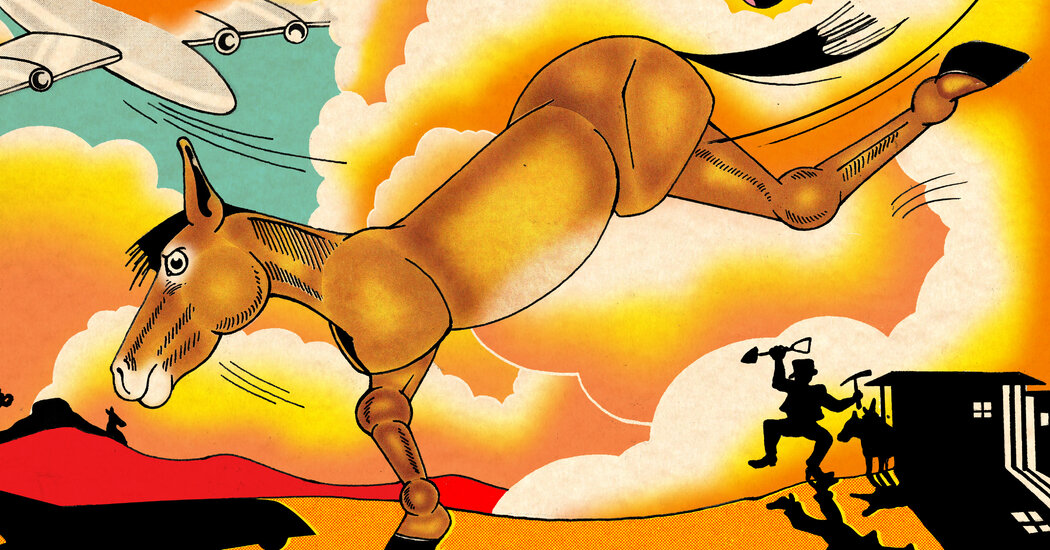Whereas Ahab’s monomaniacal quest for the white whale is a tale of revenge, an archetypal story of Western man’s inimical relationship to nature, Cause’s desire to become “a supercharged Aboriginal millionaire created by a God donkey” is about safeguarding his people’s future — by bringing an invasive species into harmony with its surroundings. His wife, Dance Steel, trails the fabled pathways, known as songlines, of “glasswings, Carpentaria pearl-whites, yellow-grass skippers” and other butterflies and moths on her own quest to find a people smuggler to take her to China, where she may have ancestral roots and where she believes her family could be safe.
Aboriginal peoples use the word “country” to describe not just the skies, seas, waterways and land, but how these elements connect with custom, law, language and history to form a living cosmovision. The concept can prove elusive to those who have not grown up immersed in its lore. In “Praiseworthy,” this tension between clashing worldviews plays out after a toxic cloud appears above the town, a menace the politicians in Canberra refuse to acknowledge. It is the accumulation, according to one of the 10 oracles who narrate the novel, of fragments of ancient stories and fury, “the tragedies in the epical pyres of life.” The oracle continues:
The wind looked at the remains of life in this place, then blew and blew these fragments away in mountainous serpentine waves that hit the soul world of an even greater local spirit and there, dust, ash, memories written on broken butterfly wings with black soot, all backed up into an ocher-colored haze that ended up sitting permanently over the flatlands of the blessed be thou, and more blessed be I.
The locals respond at first by holding a boxing match in the haze, hoping to transfer its curse onto their bodies so they can beat it out of one another. Eventually, they ask the government to break up the cloud with a bomb. The haze permeates the novel, at turns metaphorical, magical and real — it turns the town’s mayor white, among other things — wreaking havoc with the climate and inviting increased meddling in Praiseworthy’s affairs by a series of outsiders.
The acrimonious overlapping of time and worldviews finds further expression in Wright’s depiction of the internet. For the terminally online Tommyhawk, Cause’s 8-year-old son, the internet is a kind of dark corollary to country, and it takes such a hold of the boy that he lives almost completely inside it. He’s unable to distinguish reality from fantasy, particularly the news media’s portrayal — buttressed by shock jocks and anonymous chat boards — of Aboriginal communities as rife with pedophilia.
Tommyhawk becomes obsessed with the idea that the minister for Indigenous affairs — “the swivel-throned Golden Hair Mother” — will adopt him and take him away from Praiseworthy. He attempts to set his crazed plan in motion by reporting his 17-year-old brother, pointedly named Aboriginal Sovereignty, to the police for marrying his 15-year-old girlfriend (in keeping with the town’s traditional practice). The revelations only fuel suspicions that Praiseworthy is full of pedophiles and child abusers, with dire consequences for the entire community. The brothers’ plight is a powerful indictment of the persistent notion that only through assimilation and the adoption of white values can Indigenous people be trusted with autonomy.

